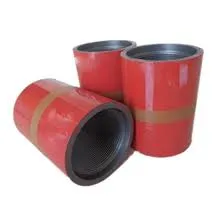- Afrikaans
- Albanian
- Amharic
- Arabic
- Armenian
- Azerbaijani
- Basque
- Belarusian
- Bengali
- Bosnian
- Bulgarian
- Catalan
- Cebuano
- Corsican
- Croatian
- Czech
- Danish
- Dutch
- English
- Esperanto
- Estonian
- Finnish
- French
- Frisian
- Galician
- Georgian
- German
- Greek
- Gujarati
- Haitian Creole
- hausa
- hawaiian
- Hebrew
- Hindi
- Miao
- Hungarian
- Icelandic
- igbo
- Indonesian
- irish
- Italian
- Japanese
- Javanese
- Kannada
- kazakh
- Khmer
- Rwandese
- Korean
- Kurdish
- Kyrgyz
- Lao
- Latin
- Latvian
- Lithuanian
- Luxembourgish
- Macedonian
- Malgashi
- Malay
- Malayalam
- Maltese
- Maori
- Marathi
- Mongolian
- Myanmar
- Nepali
- Norwegian
- Norwegian
- Occitan
- Pashto
- Persian
- Polish
- Portuguese
- Punjabi
- Romanian
- Russian
- Samoan
- Scottish Gaelic
- Serbian
- Sesotho
- Shona
- Sindhi
- Sinhala
- Slovak
- Slovenian
- Somali
- Spanish
- Sundanese
- Swahili
- Swedish
- Tagalog
- Tajik
- Tamil
- Tatar
- Telugu
- Thai
- Turkish
- Turkmen
- Ukrainian
- Urdu
- Uighur
- Uzbek
- Vietnamese
- Welsh
- Bantu
- Yiddish
- Yoruba
- Zulu
Casing Connections and Coupling Mechanisms for Enhanced Oil and Gas Operations
Understanding Casing Threads and Couplings A Key Component in Oil and Gas Drilling
In the oil and gas industry, the extraction of resources requires the use of specialized equipment and technology. Among the many components that play critical roles in drilling operations, casing threads and couplings stand out as essential elements. They ensure the structural integrity of wells, facilitate the safe and efficient transportation of fluids, and are key in maintaining the overall safety of drilling activities.
Casing refers to the series of pipes that are inserted into a drilled well to provide support and prevent the surrounding geological formations from collapsing. The casing also serves as a barrier to protect groundwater and keep the wellbore stable. To create a strong connection between these pipes, various threading systems are employed. Casing threads are specifically designed to create tight seals between casing sections, which is vital for preventing leaks and maintaining pressure during drilling operations.
There are several types of casing threads available in the industry, each designed for specific applications and conditions. The most common thread types include API (American Petroleum Institute) threads, which are standardized for use globally, and premium threads, which are engineered for higher performance in challenging environments. API threads are typically used in conventional situations, whereas premium threads are often employed in high-pressure or deep-water applications where additional strength and reliability are necessary.
casing threads and couplings

Couplings are another crucial element in the casing assembly. These are short sections of pipe that connect two pieces of casing together. The design of couplings varies according to the type of thread used, but they all serve the same fundamental purpose to provide a robust connection that can withstand the stresses encountered in drilling operations. The integrity of couplings is paramount, as any failure at this juncture can lead to catastrophic consequences, including well blowouts or leaks that can compromise safety and the environment.
The process of threading and coupling casing pipes involves sophisticated machinery and precise engineering. The threads must be cut accurately to ensure a tight fit between sections, and the quality of couplings is checked rigorously to meet safety and performance standards. Additionally, advanced coatings and treatments may be applied to casings and couplings to enhance their resistance to corrosive substances and the high pressures found in certain geological formations.
Overall, casing threads and couplings are fundamental components in the oil and gas drilling process. Their proper application ensures the structural integrity of the well and facilitates the safe transportation of fluids from underground reservoirs to the surface. As the energy industry continues to evolve, innovations in casing technology and improved threading techniques will further enhance the safety and efficiency of drilling operations.
In conclusion, understanding the intricacies of casing threads and couplings is essential for professionals in the oil and gas sector. The combination of engineering precision in thread design, the reliability of couplings, and robust material choices contributes to the successful extraction of vital resources. As drilling techniques advance and exploration pushes into deeper and more challenging environments, the importance of high-quality casing systems will only increase, making it a key focus for continued research and development in the industry.
-
Tubing Pup Joints: Essential Components for Oil and Gas OperationsNewsJul.10,2025
-
Pup Joints: Essential Components for Reliable Drilling OperationsNewsJul.10,2025
-
Pipe Couplings: Connecting Your World EfficientlyNewsJul.10,2025
-
Mastering Oilfield Operations with Quality Tubing and CasingNewsJul.10,2025
-
High-Quality Casing Couplings for Every NeedNewsJul.10,2025
-
Boost Your Drilling Efficiency with Premium Crossover Tools & Seating NipplesNewsJul.10,2025







